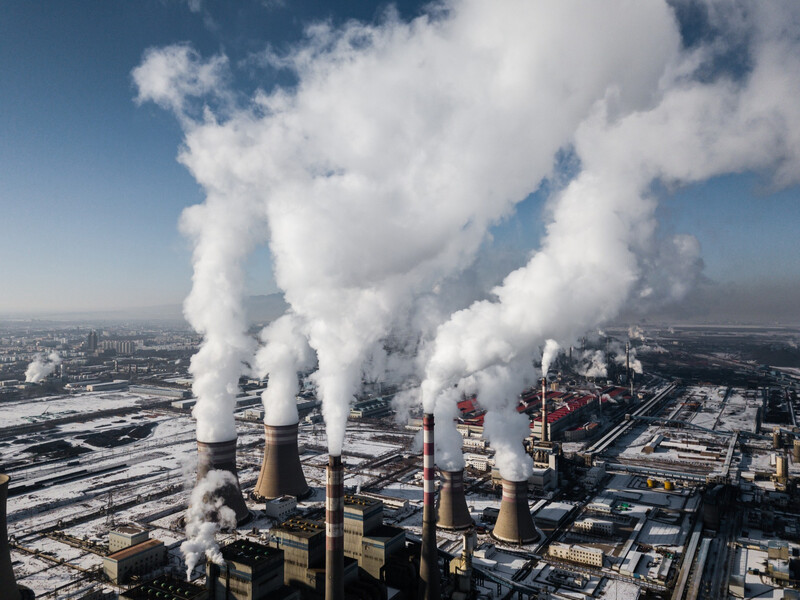Décriés par certains militants écologistes comme Greta Thunberg, approuvés par de nombreuses entreprises, les crédits carbone et leur régulation font l’objet de nombreux enjeux et discussions dans le cadre de la COP26. En quoi consistent-ils ?
Les crédits carbone contestés par certains militants écologistes
Mercredi 3 novembre, la militante écologiste Greta Thunberg a quitté une table ronde qui réunissait différents acteurs, notamment des compagnies pétrolières comme Shell et BP, ainsi que plusieurs banques. « C’est du greenwashing ! » s’est-elle exclamée avant de partir, alors que les discussions portaient sur la compensation carbone, et plus précisément sur les crédits carbone des entreprises.
Soutenue par l’ONG Greenpeace, qui a partagé sur les réseaux sociaux l’extrait vidéo en question, Greta Thunberg a par la suite déclaré sur son compte Twitter :
« Shell, BP & StanChart sont ici à Glasgow pour essayer d’intensifier la compensation et donner aux pollueurs un laissez-passer gratuit pour continuer à polluer. Leur plan pourrait ruiner l’objectif de 1,5 °C ».
La militante critique le principe de la compensation carbone, qui selon elle « risque de porter atteinte aux droits humains et de nuire à des communautés déjà vulnérables ».
Mais en quoi consistent les crédits carbone, décriés par de nombreux écologistes et recherchés par beaucoup d’entreprises ? Comment fonctionnent ces outils de compensation carbone, présentés par certains comme un moyen d’atteindre la neutralité carbone ?
L’absence de régulation des crédits carbone
Depuis 2 ans, les crédits carbone sont en plein essor. Encore limité à l’heure actuelle, ce marché est amené à se développer et pourrait représenter, en 2030, pas moins de 300 milliards de dollars, et jusqu’à 1 000 milliards dans les décennies à venir, selon certaines estimations.
Concrètement, un crédit carbone équivaut à 1 tonne de CO2 qui n’est pas émise dans l’atmosphère, grâce à une diminution de l’utilisation des énergies fossiles, à un projet permettant la réduction de ces émissions ou à une compensation visant à augmenter la capacité de stockage des puits de carbone, dans le cadre d’un projet de reforestation par exemple.
Les entreprises et les États en possession de crédits carbone ont la possibilité de les vendre à d’autres entreprises ou États qui souhaitent investir dans des projets « verts », dans le domaine des énergies renouvelables notamment, ou qui en ont besoin pour compenser les émissions de gaz à effet de serre qui n’ont pas pu être réduites.
Le marché des crédits carbone souffre d’un manque de régulation, qui rend souvent impossible à évaluer la véritable valeur climatique de ces crédits. De trop nombreux standards, ainsi que la multiplication des intermédiaires ont conduit à une impossibilité de contrôle. Les prix sont disparates, et un grand nombre de crédits carbone sont très anciens et n’ont donc plus aucun bénéfice climatique.
Si l’article 6 de l'Accord de Paris prévoyait la régulation des crédits carbone, dans les faits, les pays signataires ne sont pas parvenus à accorder une valeur et des standards communs à ces outils de compensation carbone. Or, cette absence de régulation pourrait considérablement nuire au climat, et limiter, voire anéantir les bénéfices climatiques des différents engagements pris par les États.
Ce serait le cas si, par exemple, tous les crédits carbone obtenus dans le cadre du protocole de Kyoto, signé en 1997, obtenaient l’autorisation d’être utilisés alors qu’ils sont trop anciens pour apporter un quelconque bénéfice climatique.
L’entente semble loin d’être acquise entre les différents pays, ce qui incite le secteur privé à poursuivre les discussions sans les gouvernements. C’est ce qu’a notamment initié Mark Carney, ancien gouverneur de la Banque d’Angleterre à l’origine du Glasgow Financial Alliance for Net Zero, qui a mis en place un groupe de travail dédié à la régulation des crédits carbone.
